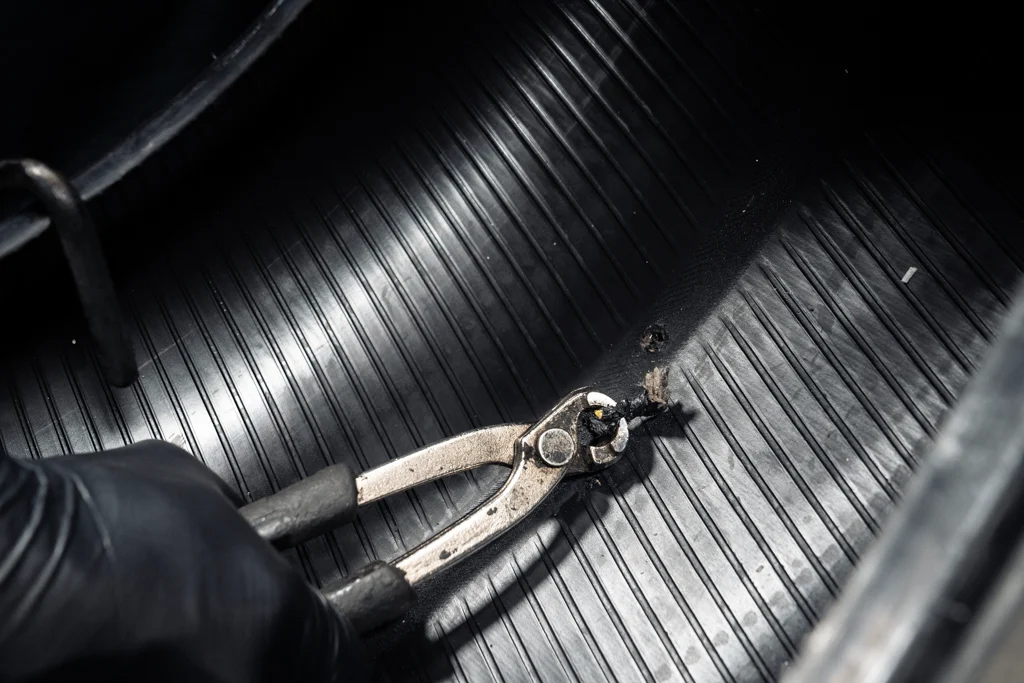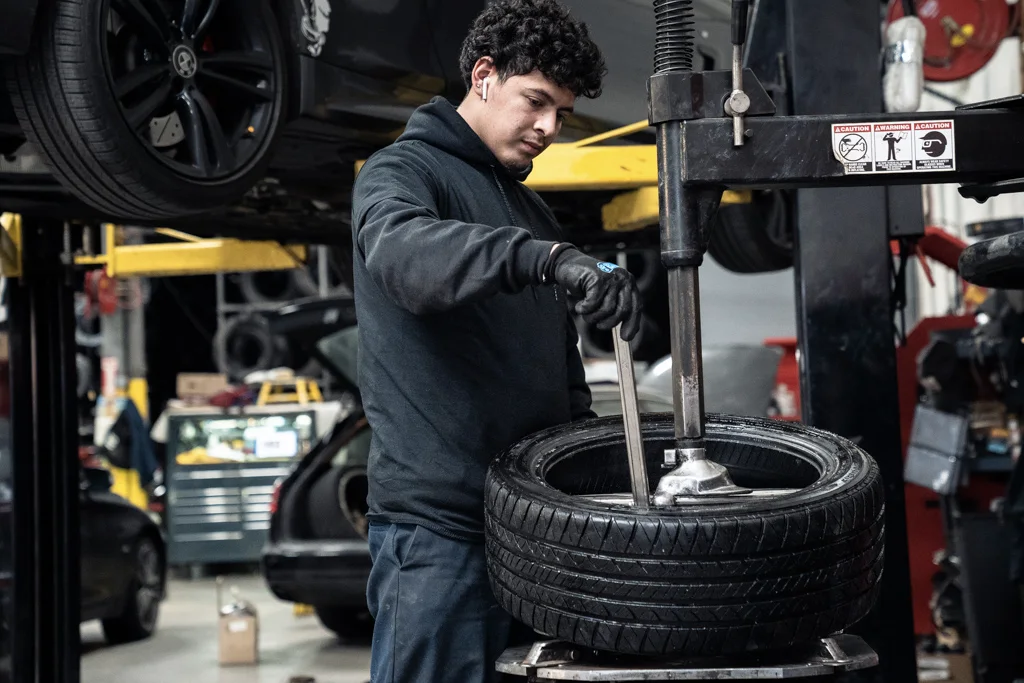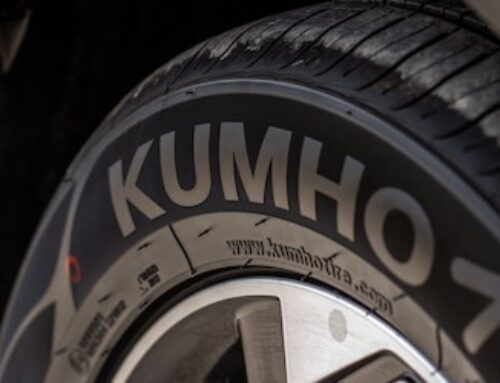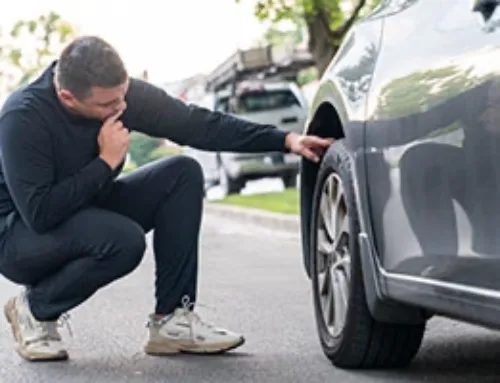Table of Contents
You’re about to head out to an important meeting or are getting ready to head home from work and you notice you’ve got a flat tire! As a motorist, one of the worse feelings is finding out your car has a puncture. So what can you do about it? While tire patches are the most well-known way to fix flat tires, tire plugs are an excellent option for repairing a tire puncture quickly and easily. Below we’ll look at the benefits and drawbacks of plugged tires as well as how to plug a tire yourself.

What is a tire plug?
You’ve heard of patching tires, and you may remember using a tire patch on your bicycle tires when you were a kid, but what about a tire plug?
A tire plug is a popular way to repair tires, using a special, tacky piece of rubber-coated leather that you insert into the puncture, where it expands to fill the hole and creates an airtight seal. They can be quick and easy to install and are often the cheapest way to fix a punctured tire. But are they really all that?
When to use a tire plug
Tire plugs are a great option for many people, but it’s important to know when to use them and when to use another repair method. Here are the main criteria for using a tire plug:
- A tire plug works best for punctures caused by nails, screws, and other small objects.
- You need to make sure that you only have a small puncture, as the plug may not be able to hold the air pressure in a larger hole, and the tire could deflate again.
- Any punctures over 1/4 inch are not suitable candidates for a tire plug.
- You should only use a tire plug in the treads of the tire and not in the tire sidewall.
- A tire plug will only work if the puncture is straight.
Another critical factor is that not all tires can be plugged. A tire plug will only work with tubeless tires, so if your tire has an inner tube, this solution is not for you – in this case, you’ll want a radial patch.

How long do tire plugs last?
“How long does a tire plug last” is a contentious question, with some experts saying they can last from seven to ten years. However, most tire experts say that, on their own, plugs are really only designed to provide a temporary fix for punctured tires, but when tire plugging is used in combination with patching, it can provide a much longer-lasting repair.
If you have used a tire plug it’s best to get the tire inspected and serviced by a professional as soon as possible to ensure the safety of your vehicle and its passengers. They will check that the tire passes safety tests, and they may also add to the repair giving it more longevity. Alternatively, they may suggest that you need a new tire.
Don’t let the best tire deals & tips roll by!
Sign up for our newsletter
Is it safe to drive on a plugged tire?
The good news is that it’s safe to drive on a plugged tire, provided that the plug was applied properly, and your tire and the puncture meet the conditions mentioned above.
The plug needs to have been placed securely in the puncture to create a tight seal. If your plug is applied correctly, you shouldn’t have any issues driving. However, we always recommend that you get a plugged tire checked at a tire shop as soon as possible to ensure the fix is solid. It’s also important to check the plug was correctly applied, as a badly applied plug can void your tire warranty.
The risks of driving on a plugged tire
The main reason we recommend getting any plug repairs checked out is that there are risks with the plugging process, especially if it’s not carried out correctly.
A plug will always be made from a different material than your tire and, as a result, may behave differently from the rest of your tire in certain temperatures or weather conditions. This could lead to it leaking or even cause you to have a blowout, which can be very dangerous. The risks will get higher the faster you drive and can be much more serious than just having to buy a new tire.

How to plug a tire: 7 steps
So you’ve got a flat tire and want to fix it with a tire plug. Here’s our quick step guide to tire plugging.
1. Find the leak
The first step is to find the puncture. This may require jacking up the car, or you may be able to see the damage with the tire on the ground. As long as the puncture is in the tire’s tread, you’re good to go. If you are having a hard time finding the hole, you can use a spray bottle filled with soapy water to spray the tire and look for air bubbles, indicating the location of the leak.
2. Remove the sharp object
If the puncture was caused by a screw or other sharp object in the tire, you should carefully remove it using pliers. Be careful to pull it out in a straight line so the hole remains straight. This may be difficult and require quite a lot of strength and leverage to remove the foreign object.
3. Ream the puncture
In your tire plug kit, you’ll get a T-reamer tool which you use to clear out the puncture hole making sure it’s straight and clear of excess debris. You may need to use a lot of strength to get the reamer into the tire, especially if it’s a very small hole.
4. Prepare the plug
Your kit will come with a tool for inserting the plug. To use it, thread the plug strip through the eyelet of the tool, following the instructions on the packaging. If your kit contains rubber cement, apply this to the plug and the inside of the hole before inserting the plug.
5. Insert the plug
Now you’ll insert the tire plug into the puncture. You might have to push quite hard to get it in but keep pressing until there’s between 1 – 1/2 inch of the plug sticking out.
Check the instructions on your pack for exactly how you need to twist the insertion tool handle for removal – do this carefully, and you’ll be able to pull out the tool and leave the plug in the hole.
6. Fill the tire
Using either a portable air compressor or an air compressor at a gas station or convenience store, fill your tire up to the recommended air pressure.
7. Finish up
Now you can check that the tire plug is properly installed by spraying a little soapy water around it. Ideally, no bubbles will appear – if they do, you will need to take your car to a tire care shop for a more thorough fix.
Assuming the plug is properly inserted, you can now trim down the excess so it’s flush with the tire and drive off.

How much does it cost to plug a tire?
The cost of a tire plug is very affordable, typically only a few dollars, which is why many people choose to use them. A tire plug kit that you can use yourself usually costs under $10, while getting a professional to repair your tire with a tire plug costs around $25.
Frequently Asked Questions
How long can you drive with a tire plug?
The length of time you can drive with a tire plug ranges from a few days to a few years, depending on various factors, including the size and type of puncture, how well the plug was applied, and whether a tire patch was also applied.
We always recommend visiting a tire expert to check the repair as soon as possible. It is important to note that tire plugs alone are really only temporary fixes in most circumstances, and the answer to ‘how long does a tire plug last’ is rarely forever.
Is plugging a tire a permanent fix?
No. Plugging a tire is not a permanent fix, and you should get a tire expert to look at your plugged tire as soon as possible after it has been repaired. However, it also depends on the age of the tire and whether the plug is installed correctly. While experts say that tire plugs can last around 5 years, your tire will never be as strong after it has been plugged, so you need to be more cautious driving on a plugged tire, as your tire’s speed rating will be reduced.
Will a tire plug last the life of the tire?
It is possible for a tire plug to last the life of the tire if done correctly by a professional, often in conjunction with a patch. Tire plugs are a great, cost-effective way to repair a damaged tire in certain circumstances, but are generally just a temporary solution.
When plugging a tire, it’s always important to make sure that the tire plug is installed properly and that it seals the puncture completely. If a tire plug is not applied adequately, it can eventually leak or cause structural failure and a blowout. However, if a tire plug is used correctly, it could last the entire life of the tire.
Is it safe to drive with a plug in a tire?
Driving with a plugged tire is generally safe as long as you don’t drive too fast. It’s important to remain aware of the pressure of your tire and check that the plug is securely in place. Make sure to get your tire professionally inspected as soon as possible to make sure that the plug is properly sealed and that the tire is still safe for longer-term use. Additionally, it’s a good idea to have a spare tire handy just in case!
Is it better to patch or plug a tire?
A properly installed tire patch is a longer-lasting solution than a quickly installed plug and is better for larger holes, but that’s not always the case. A well-installed plug, where the meshing agent is applied to seal the plug in place, can work extremely well on smaller straight punctures, like those caused by screws and nails. However, a patched tire or a combination plug patch (also known as a mushroom patch) is probably the best option for long-term repair. We always recommend you consult a professional if you are unsure.
Can a tire plug cause a blowout?
It is possible for you to get a blowout with a plugged tire. The material of your plug will differ from the material of your radial tires, and so if you drive very fast and the tire heats up, it can cause the plug to fail and for you to have a blowout. This only happens in certain rare instances, and that is why we always suggest you get your tire repair double-checked by an expert to ensure it’s safe to drive on.
Can I plug and patch a tire at the same time?
Yes, in some circumstances, you can have patches and plugs in your tire at the same time. A tire patch goes on the inner surface of the tire while a plug is inserted from the outside. However, if your tire has multiple punctures close together or a puncture in the tire wall, then it’s time to get a brand-new tire. We always suggest contacting a professional to get a tire plug or radial patch properly applied and to ensure your tire safe driving.









